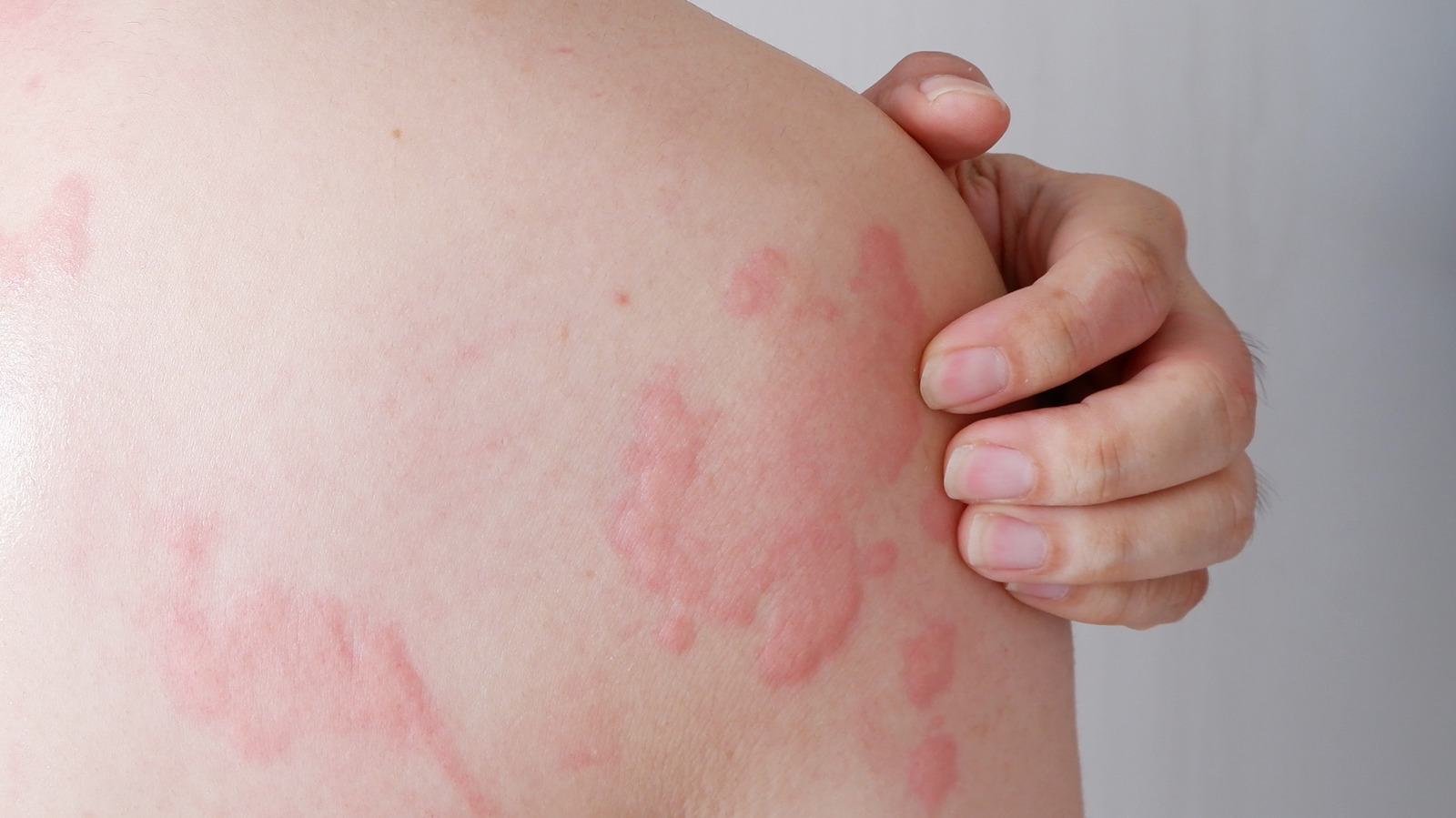Hives or Urticaria are red and itchy rashes on the skin caused by some allergen.
Medical experts say that about 20% of the world’s population suffers from hives at some point in their lives. The condition is also known as wheals, welts, and nettle rash. [1]
Coconut oil is a beneficial natural ingredient for the skin. Numerous scientific research confirms the efficacy of the Medium Chain Fatty Acids and other therapeutic components in coconut oil to treat various skin conditions — hives, eczema, psoriasis, acne, and so on. [2]
This article covers the beneficial effects and uses of coconut oil for hives treatment, plus the symptoms and causes of the allergic condition.
Causes and Symptoms of Hives
Hives cause acute rashes on the skin. The oval-shaped pink or red rashes are extremely itchy and may cause swellings. Hives rashes can be several inches long in diameter. Hives generally appear in batches on the face, lips, tongue, throat, ears, hands, legs, toes, fingers, or on any other parts of the body. [3]
Your body releases histamine chemicals beneath the skin when triggered with some allergen. This allergic reaction may cause itchy and red rashes or swellings called hives.
- Some of the allergic triggers that may cause wheels to include:
- Certain anti-inflammatory, antibiotic, and nonsteroidal drugs,
- Certain medical conditions (cold, hepatitis B, influenza, glandular fever, etc.)
- Food items (shellfish, nuts, etc.) and food additives,
- Bacterial infections
- Dust mites
- Extreme weather conditions
- Pollen, latex, and coming close to certain toxin plants (poison ivy, oak, nettles, etc.)
- Insect bites or stings etc.
Coconut Oil for Hives- How Effective?
Coconut oil is a traditional remedy for numerous skin conditions. The oil is an effective moisturizer that can soothe dry and itchy skin rashes. Medical experiments have found out the chemical constituents in coconut oil have therapeutic benefits for overall skin health.
A 2019 study in the Journal of Traditional and Complementary Medicine confirms the skin protective effects of virgin coconut oil. According to the study, the oil is a potent source of essential fatty acids such as Caprylic acid, Capric acid, Lauric acid, Myristic acid, Palmitic acid Stearic acid, Oleic acid, and Linoleic acid.
In vitro studies, these bioactive components showed powerful anti-inflammatory, antibacterial, hydrating, and skin protective effects for various skin conditions. [4]
The 2016 study, Current Allergy, and Asthma Report list coconut oil as an effective natural remedy for treating contact dermatitis conditions. [5]
How to Use Coconut Oil for Hives
You can use coconut oil in numerous ways to treat hives at home. Here are some of the best application methods suggested by health professionals.
1. Coconut Oil Topical Massage
Numerous clinical studies suggest the beneficial effects of virgin coconut oil for treating inflammatory skin disorders. The oil has a thin consistency and can soothe the affected skin with its moisturizing effects.
The anti-inflammatory fatty acids in coconut oil can treat the symptoms of hives such as redness, itch, and irritation. You can gently spread a thin layer of a few tablespoons of virgin coconut oil over the hives affected skin area twice daily. Do not press the inflamed skin or rub too harshly as doing so may worsen the skin condition.
2. Coconut Oil with Essential Oil
Various essential oils are a potent source of anti-inflammatory, anti-itch, and other skin protective components.
Essential oils such as lavender, peppermint, frankincense, and tea tree oil are traditionally used in many skincare products. Essential oils, when mixed with coconut oil, may quicken the healing process of the hives and their symptoms. [6]
Mix 2-3 drops of lavender or tea tree oil with 2 tablespoons of coconut oil. Apply the oil blend to the hives affected the skin area. You can repeat the treatment twice a day to relieve the itch and other symptoms of hives.
3. Coconut Oil Bath
A coconut oil bath is a comfortable way to deal with hives. The treatment option is very effective in relieving the hives’ irritated skin and clearing up the outbreak fast.
You can fill a bathtub with lukewarm water, add a cup of oatmeal and 2-3 tablespoons of coconut oil. Soak in the water for 15-20 minutes to relieve the Urticaria symptoms.
When to See a Doctor
Hives are not contagious and may disappear with their symptoms in a day. However, a new batch of wheels may appear on the skin as the first ones fade.
Depending on the duration of the condition and the causes hives are classified as acute urticaria (lasting less than six weeks) and chronic urticaria (lasting more than six weeks). [7]
Angioedema is another skin condition similar to hives. It occurs beneath the skin and causes swellings in the hands, feet, genitals, and other skin areas.
Chronic urticaria and angioedema may prove to be fatal if these persist for a long time. Visit a doctor for proper diagnosis and treatment if you experience the following: [4]
- Loss of consciousness
- Breathing difficulties
- Feeling lightheaded
- Nausea and vomiting
- Anxiety and cold skin
Your doctor may prescribe specific antibiotics and antihistamine drugs to relieve the symptoms of hives.
Bottom Line
Hives or Urticaria is an allergic condition that may cause severe itch, rashes, swellings, and redness of the skin.
Researchers suggest the positive therapeutic effects of coconut oil in treating eczema, psoriasis, acne, rashes, dry skin, and other skin conditions. A topical application of coconut oil may be effective in reducing the itch, swelling, and redness of hives.
You can apply coconut oil directly on the hive’s affected skin or mix it with essential oils or in the bath to treat hives symptoms. If the symptoms persist for more than 6 weeks you need to visit a doctor for proper treatment.
Read Next: Coconut Oil For Constipation In Babies: How It Works





